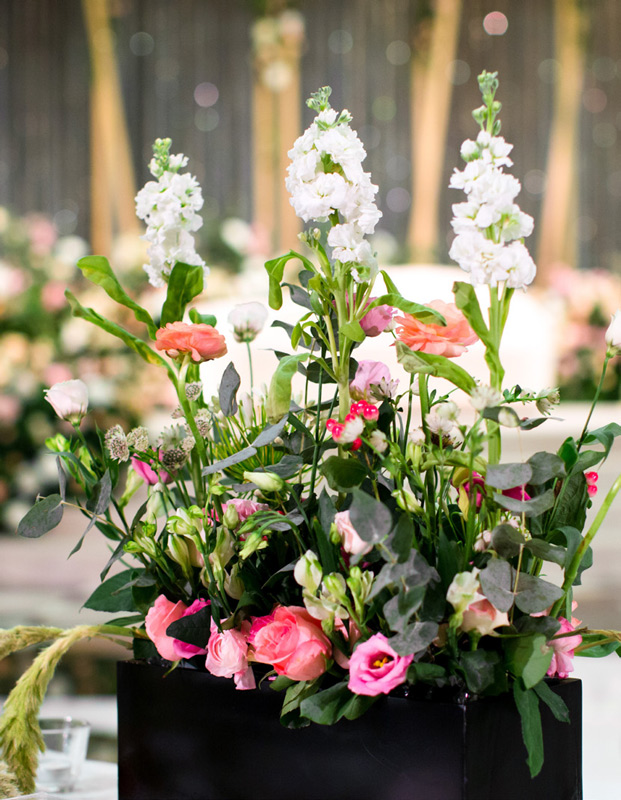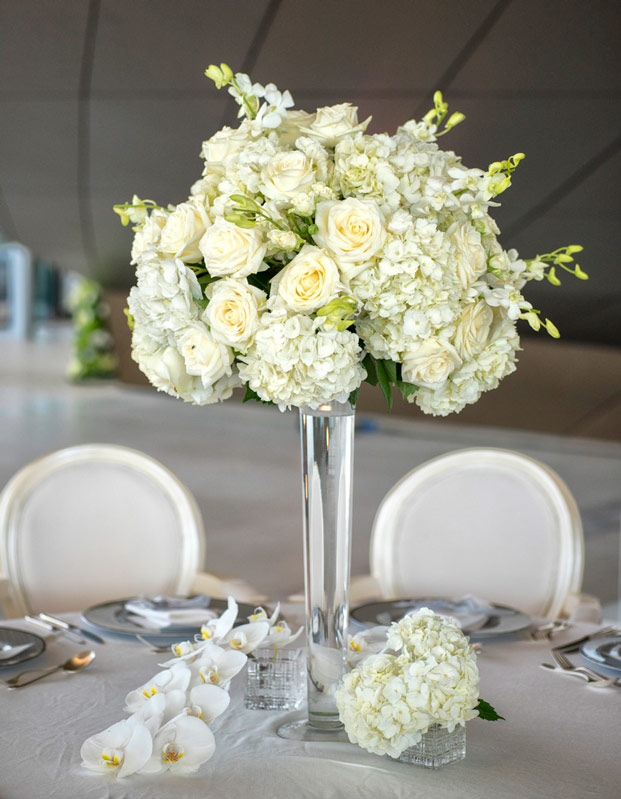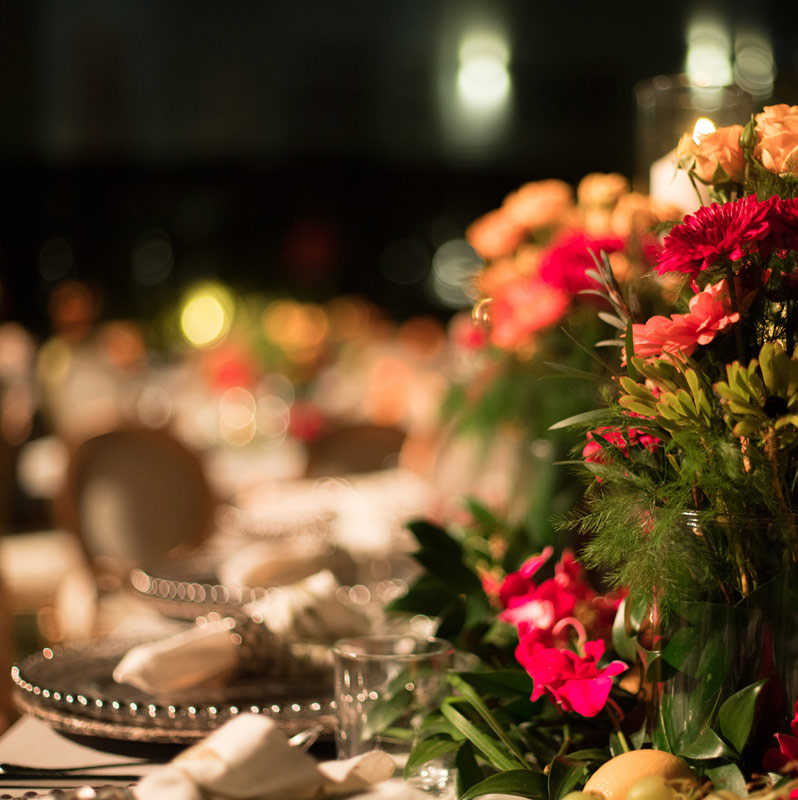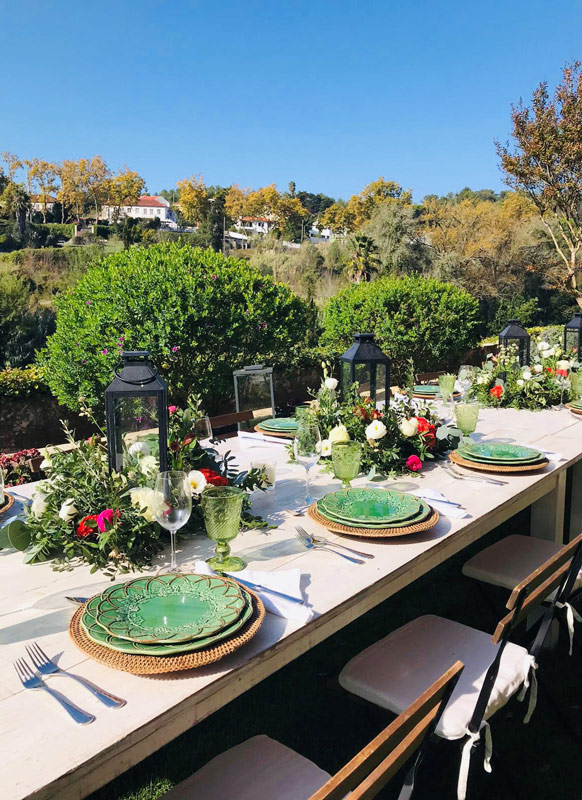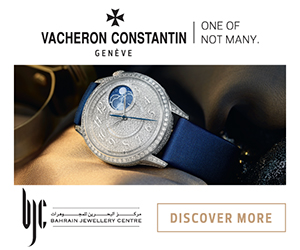The bridal season is on! From November to May is when most couples decide to take their vows in this part of the world. Amongst all the preparations for the big day, picking your floral decoration is one of them, and OHLALA gives you a little push in the right direction.
A wedding without flowers or any plant arrangement looks like something essential is missing. The good vibe that natural plants bring is what makes the ceremony even more magical. They can usually be found everywhere, from bouquets and boutonnieres to table centrepieces. Just as the bride’s dress, the floral design and the type of flower picked says a lot about the couple and the style of the wedding.
OHLALA spoke to Ires Salmon, an event planner and florist, to learn more about plant and flower decoration. She tells us that there are many ways to become a wedding florist. In her case, she took a professional floristry course at the Texas Community College in Houston: “This was a great start; the certificate gave me the confidence to move forward in my work,” she explains. She then studied floral design at the Boerma Institute, an international floral design school in the Netherlands, and took a course with the Edith Blacklock Flower School. This shows that liking flowers is a good start but looking for specific education is the best way to succeed.
In the process of choosing wedding flowers and greenery, Ires says it is fundamental to understand the couple’s preferences. There are various themes they tend to choose, such as classic, romantic, garden, beach, Bohemian, tropical and winter. “I often show customers a variety of flower motifs and arrangements to give them ideas, but the important thing is to constantly listen and note down what the couple would like to see on their special day,” she adds.
Another important detail is which flowers will be available during the period the wedding is happening. Many flowers are only in season for a few months, while others can be provided all year round, cutting down the overall cost and staying within your budget. And it’s not just about the price, picking flowers available throughout the year is a way of not being disappointed if the blooms don’t look as pretty or a sudden shortage happens right when you decide to get married.
“I would definitely recommend flowers that are available throughout the year,” emphasises Ires. Some all-year-round flowers are orchids, freesia, roses, calla lilies, delphinium, lisianthus and alstroemeria. For greenery, silver dollar eucalyptus, Italian ruscus, seeded eucalyptus, salal lemon leaf, and fern are some of the best options. However, for spring and summer weddings, Ires would suggest peonies, spray roses, tulips, sweet peas, ranunculus, waxflowers, solidago, hydrangeas, and astilbe. For autumn and winter, she would choose hypericum berries, anemones, roses, camellias, carnations, amaryllis, thistle, magnolia leaves and blue spruce.
There are many aspects in terms of flower compositions, but the most important one is to be aligned with the couple’s vision. It could be a preference for flowers with strong fragrances such as Jasmin, sweet peas, lavender, gardenias, and freesias. Alternatively, they may choose a complementary layout to the colour palette selected for the wedding. “For the arrangements, I use hues that blend with other aspects of the wedding such as tablecloths, napkins, invitation cards, and name tags,” says Ires. Another feature to keep in mind is the flowers’ height and structure; they could be tall, short, round, rectangular or just loose flowers in a vase; all those factors are imperative for a harmonious and perfect result.
Flowers can amplify the beauty of any room if they are wellchosen; they bring positive emotions to people. It’s remarkable how a room with beautiful arrangements can bring a smile to everyone’s face. The positive effect of flowers on people has inspired Ires over the years: “My inspiration and passion for wedding flowers come from the happy faces,” she says. Ires also mentions that she learned a lot by working with people from 20 different countries. They have helped her improve her skills and understanding that different cultures bring significant variations in the taste and presentation of flowers.
The last tip for brides-to-be is to choose a florist that makes you feel comfortable. An expert professional should guide you to make the best choices following your vision. It is also crucial to decide on your flower budget, bring in the florist early in the planning process, and schedule a site visit to ensure the floral concept is aligned with all other aspects of your wedding. Also, you should see your flower sample together with your tablescape (the table setting) at least two months before the wedding. No one wants last-minute surprises!
Connect with Ires Salmon @iressalmon

